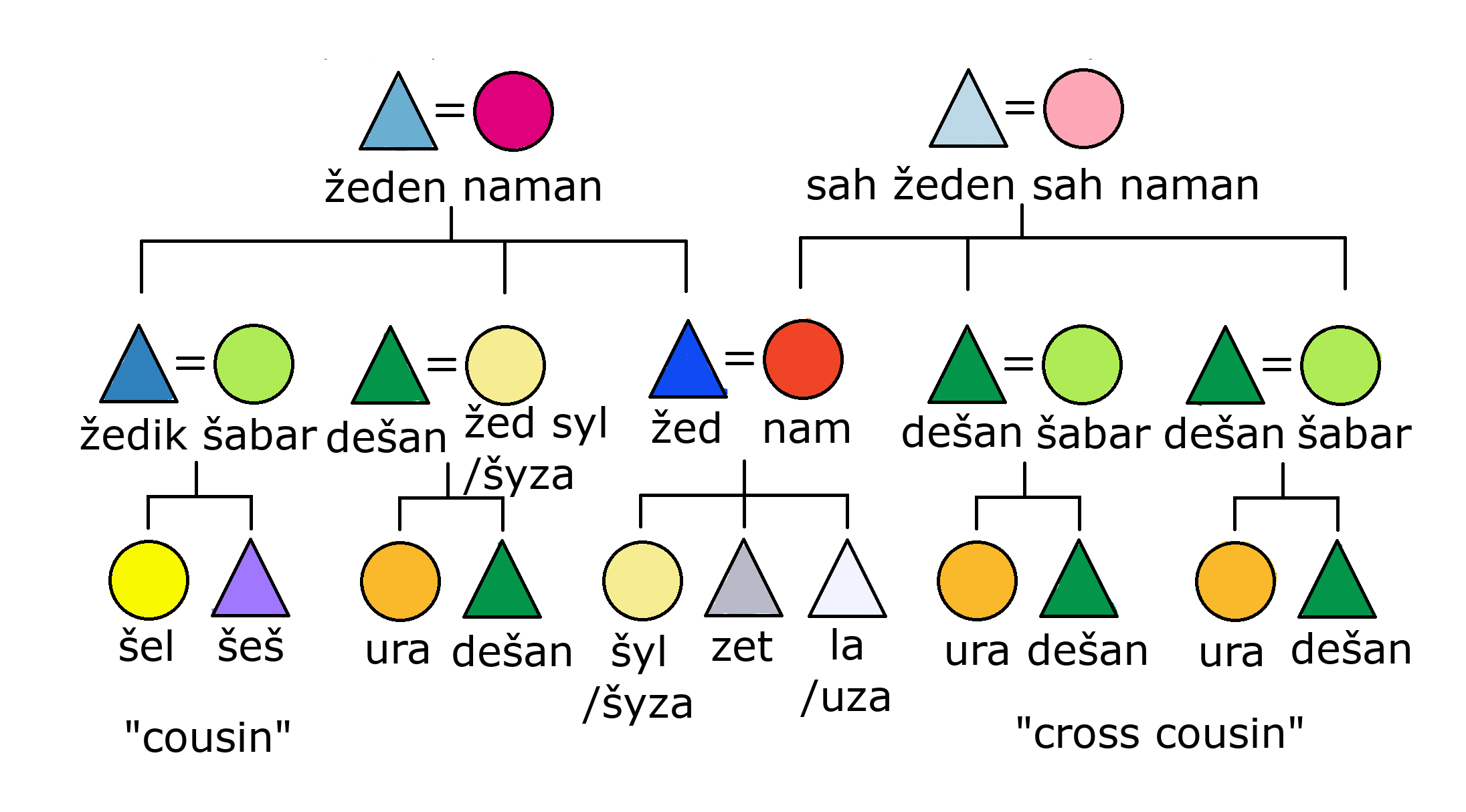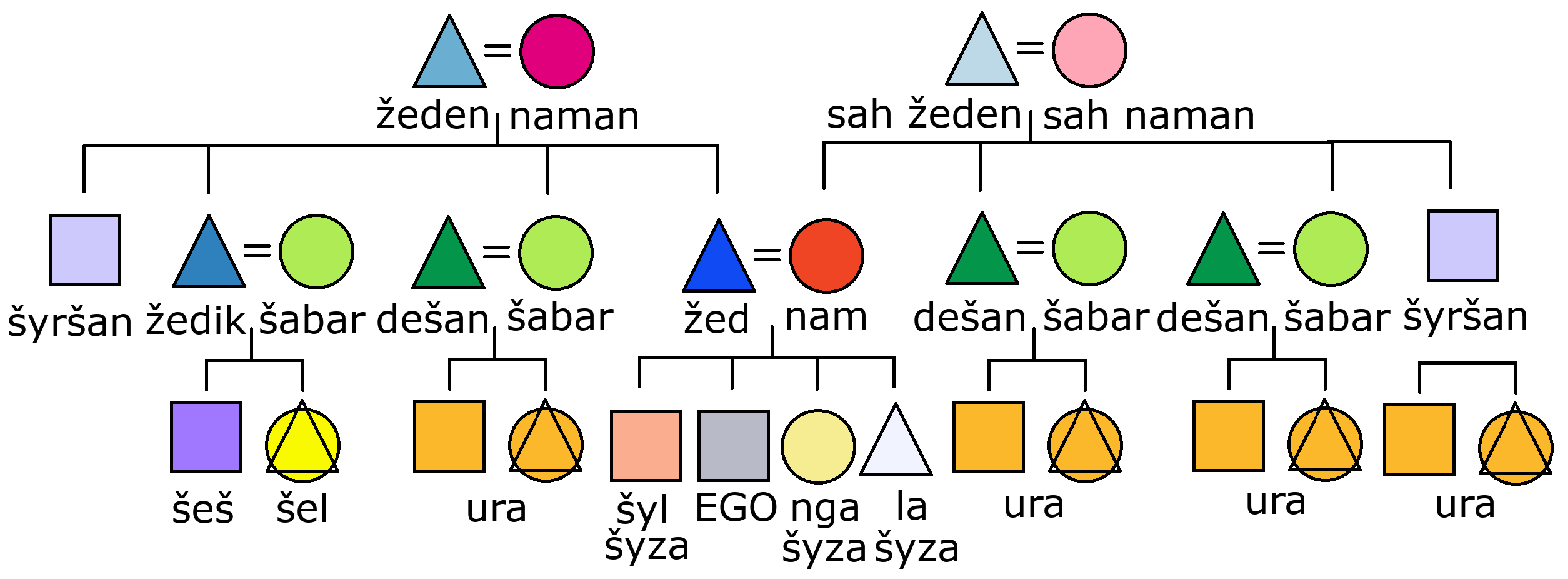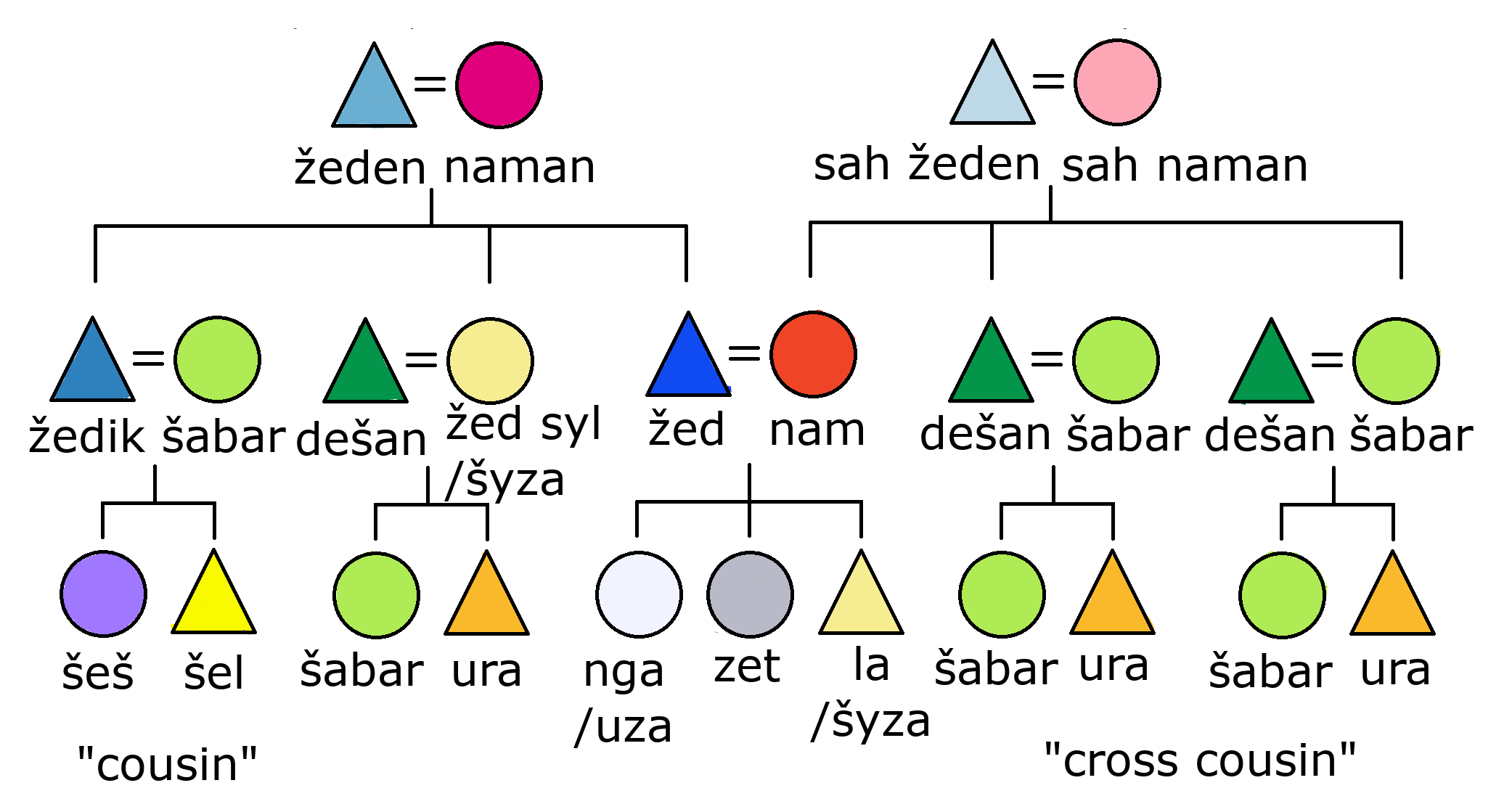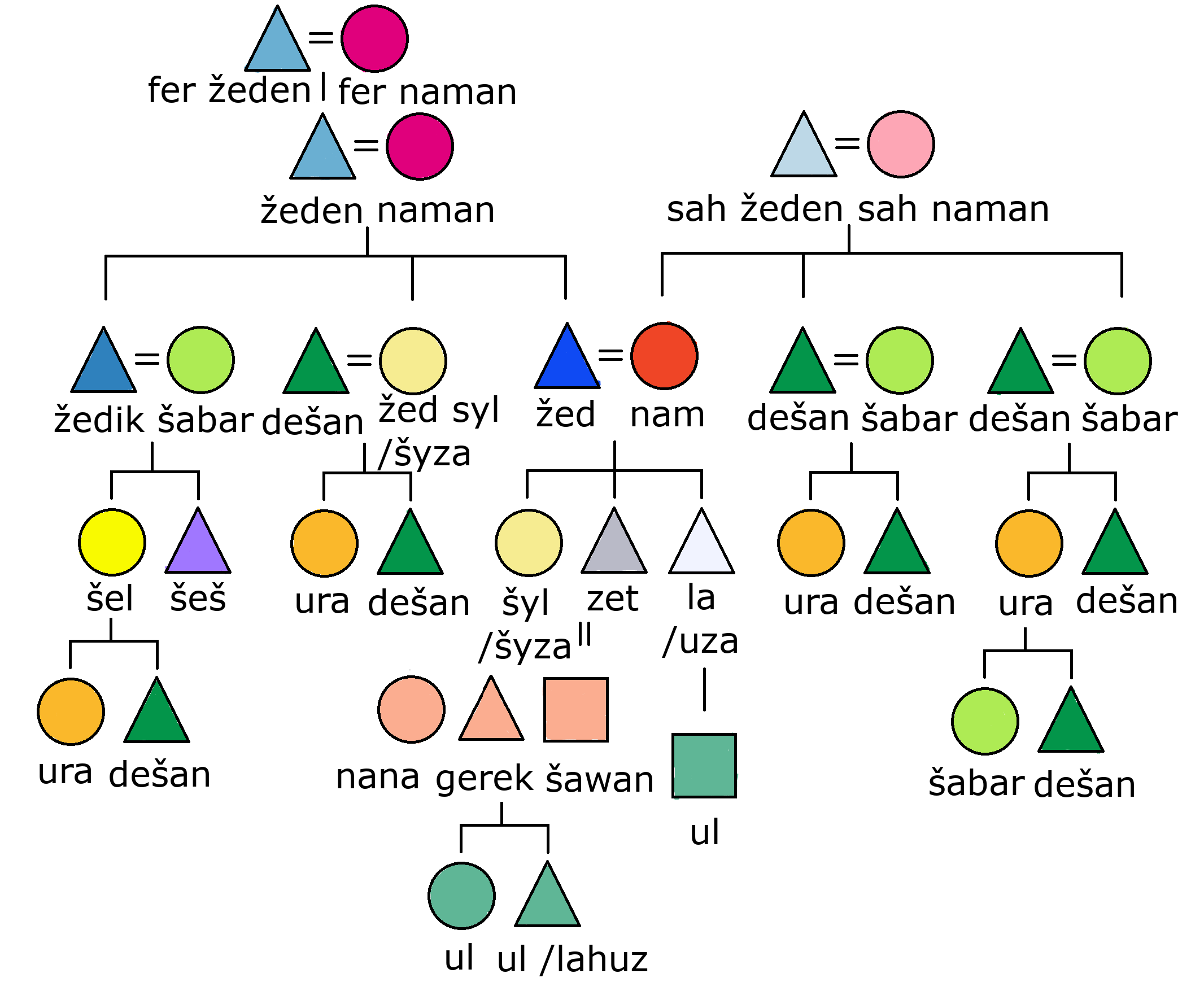Zeribian family and kinship
Concept of the family
Zeribians live with large extended families. A typical family consists of a father, mother and their children, paternal grandparents, father's younger siblings living at home, and sometimes their wives and children. In addition the family includes the slaves and servants living at the family home, and as an extension clients working for the family. The wealthy men might also have multiple wives or concubines. In addition to the immediate family, the consept of house is also incredibly important especially to the nobility. The house consists of all the people with the same patrilinear ancestry. Upon marriage the women join the husands house.Kinship system & vocabulary
These following charts illustrate the kinship words used in Ngad i zerib. Male family members are maked with a triangle, and females with a circle. The charts are centered on either male or female "I" (zet), thus "male kinship" chart has the terms that a male speaker would use of his relatives. The forms with a slash have difference based on age relative to the speaker. The first option is for relative older than the speaker, and the second option for younger than the speaker.male kinship
šyrzir kinship
In addition to man and woman, Zeribians have a third gender category, šyrzir. These are the forms used by šyrzir speakers. In simplified terms, the šyrzir refer to both male and female relatives (everyone who isn't also a šyrzir)with the other gender terms, them same way as men refer to both female and šyrzir relatives with different terms than to male relatives.
female kinship
The Zeribian system is patrilinear, meaning that the father's lineage is emphasized over the maternal linage. This is illustrated by how the paternal grandparents use more basic terms, and how cousins only exist on the paternal side. The same sex "cross cousins" on the maternal side are treated like general relatives: dešan 'general male relative, uncle', šabar 'general female relative, aunt' and šyršan 'general šyrzir relative'.
Relative age is taken into account on the sibling level. For a male speaker an older brother is la and younger brother uza. Sibling and cousin relationships track the gender of the relative: 'same-gender cousin' is called šeš and šel is 'a cousin of other gender'.
Living arrangements
The Zeribian children usually live at home until they are married. Girls move to their husband's family home, or the couple are built a new house. If they have to move elsewhere for work before, they usually live with older family members or their father's friends if possible. The oldest son usually stays at the family home continuing to take care of his mother, father and the younger siblings and eventually inherits the house, while the younger siblings move elsewhere if space is needed.Wealthy families usually own many houses. The primary family home is usually an estate in the countryside surrounded by plantations or other family business. In addition, the family usually has a house in a city, from where they can conduct business and participate in politics. It is preferred that the children grow in the countryside especially when they are still young. When they are older (after Second naming) they are taken to get to know the city and it's customs. Boys usually get to travel more, while unmarried girls live more sheltered life.
Special kin relationships
The position of the eldest brother la is of special importance in the Zeribian society. This is described in detail in: Firstborn son. Zeribians have a special taboo relationship with their ura, an other-gender cross-cousin that they can potentially be married to. Unlike with their non-marriable other-sex cousin (šel) they can't spend time alone with their ura, and are otherwise expected to treat them differently from other close relatives. This relationship continues even after marriage, because Zeribians aren't strictly monogamous.kinship chart key
Kinship extended:








Comments